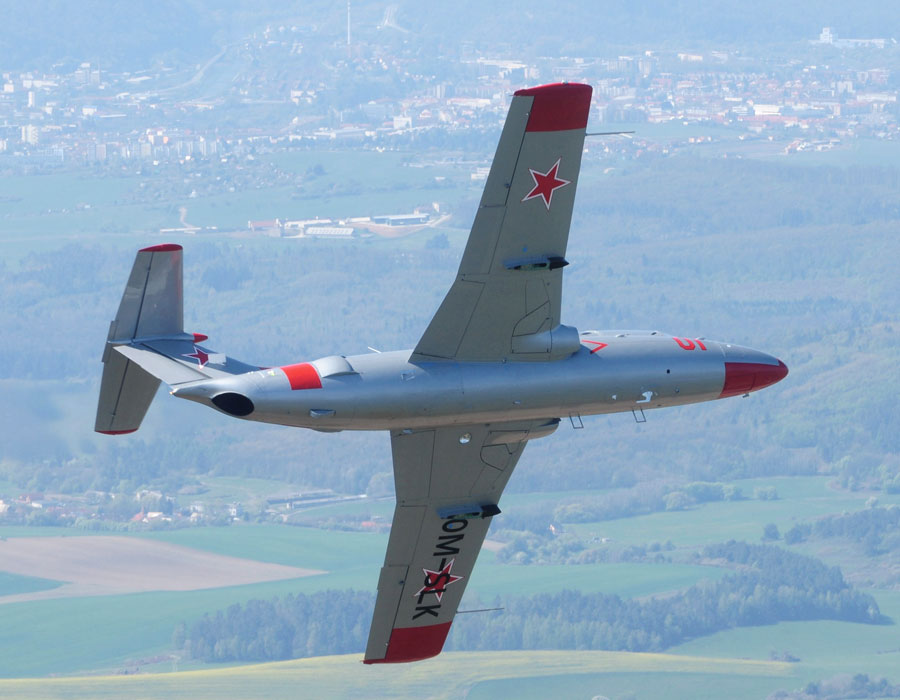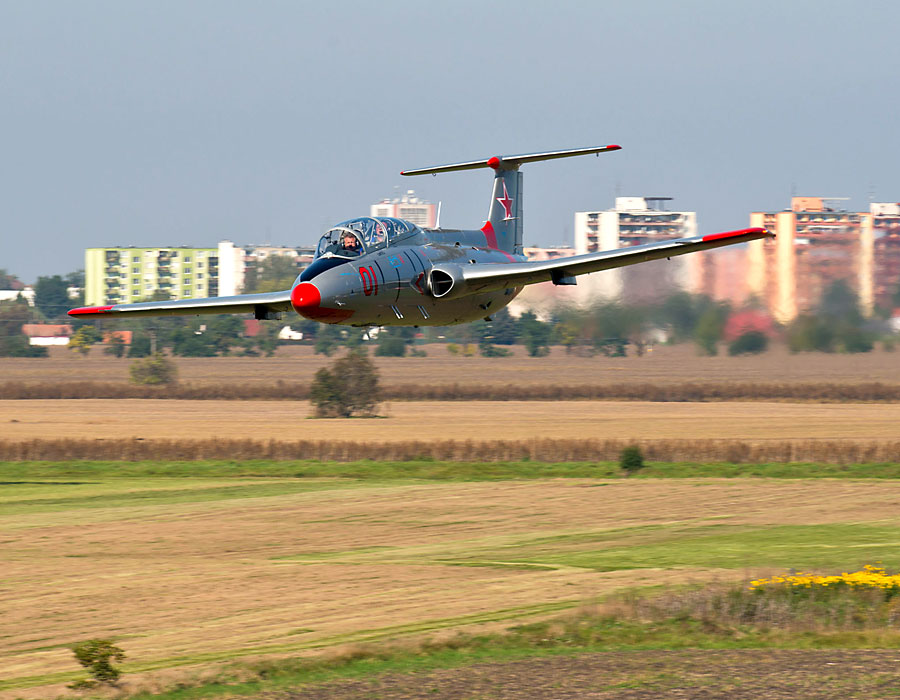

Aero L-29 Delfin: Simple and rugged
The L-29 Delfin type designation is derived from the date when the technical criteria were discussed – September 29th 1954. And virtually all of its design criteria is simple and straightforward. Manual flight controls, large flaps and other aerodynamic features offer a stable and readable flight. The original plans for an axial M-701 engine were replaced with a simpler centrifugal design to meet the requirement for operating from grass, sand and other unpaved fields.
All of these helped to reach a notable safety record. Although not used for military training anymore, the L-29 Delfin is still popular with civil operators around the world, from personal flying to airshows and competitions such as Reno air race.
Aero L-29 Delfin
To become a supersonic jet pilot, one has to train first. And to train, one does not start with a complex, multi-role fighter. After taking first flight hours on piston-powered aircraft a jet trainer is the best formula for intermediate training, revealing speed and performance of jets while keeping the flying tasks still simple enough before specializing on one of the high-end birds.
In the Cold War, the Warsaw Pact was in need of such a trainer. There were three candidates proposed: The Czech Aero L-29 Delfin, the Polish TS-11 Iskra and the Russian Yakovlev Yak-32. Of those jet trainers, the L-29 Delfin became the platform of choice until replaced by the “MiGFlug standard jet” L-39 Albatros a decade later. After 12 years in production (ended in 1974) Aero Vodochody delivered 3665 airframes to 15 countries, including 2785 for the USSR.
Technical Data L-29 Delfin
Aero L-29 Delfin – simple and rugged.
- Rate of climb: 11.000 m
- Maximum speed: 655 km/h (353 knots, 407 mph) at 5,000 m (16,400 ft)
- Fuel capacity: 3540 kg
- Span: 10.29 m
- Length: 10.81 m
About Aero L-29 Delfin
The L-29 Delfin type designation is derived from the date when the technical criteria were discussed – September 29th 1954. And virtually all of its design criteria is simple and straightforward. Manual flight controls, large flaps and other aerodynamic features offer a stable and readable flight. The original plans for an axial M-701 engine were replaced with a simpler centrifugal design to meet the requirement for operating from grass, sand and other unpaved fields.



Fly the L-29 Delfin!
Did you ever dream of a Fighter Jet Ride?
Make your Dream Come True with MiGFlug and Fly a Jet Fighter!
Select an offer and read more about it.